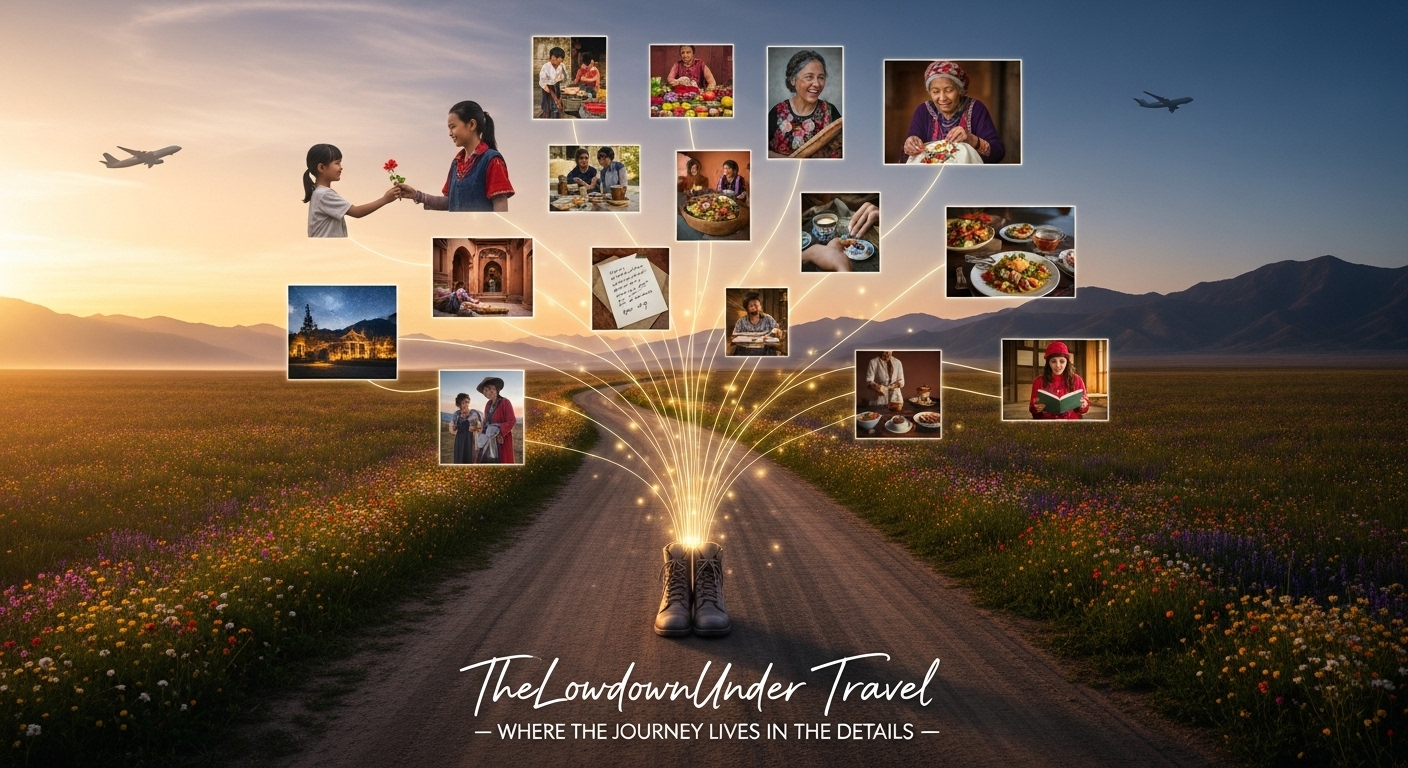Travel isn’t just about ticking destinations off a list it’s about experiencing culture, connecting with people, and discovering places that stay with you long after the journey ends.
That philosophy sits at the heart of TheLowdownUnder Travel, a style built around curiosity, thoughtful planning, and a genuine desire to explore the world authentically.
In this guide, you’ll find deeply researched tips, practical strategies, and expert-backed insights designed to elevate your travel experience. Whether you’re heading across the globe or planning a weekend escape, these principles will help you travel smarter, lighter, and more meaningfully.
Why TheLowdownUnder Travel Stands Out
TheLowdownUnder Travel isn’t about rushing through itineraries or snapping quick photos of popular tourists spots.
It’s a mindset built on:
- Cultural immersion
- Local connections
- Flexible exploration
- Budget-conscious decision-making
- Sustainable and mindful travel practices
Instead of relying on generic advice, this guide delivers deep, practical knowledge backed by real examples and verifiable data.
1. Smart Travel Planning: Prepare Well, Stay Flexible
Good travel starts long before you board a flight. But overplanning can be just as limiting as failing to prepare at all. TheLowdownUnder Travel strikes a balance: plan your essentials, then leave room for spontaneity.
1.1 Plan Early, But Not Rigidly
Booking flights and accommodations 2–3 months in advance is a widely recommended sweet spot for cost savings.
According to multiple airfare analyses (e.g., Hopper’s annual report), airfare prices tend to climb significantly within 21 days of departure.
Yet flexibility remains your strongest asset.
Why a flexible approach matters:
- Spontaneous opportunities: Sometimes, the most memorable adventures are unexpected.
- Changing conditions: Weather shifts, festivals evolve, prices fluctuate, and local events may open new doors.
- Better deals: Prices can drop unexpectedly being adaptable lets you take advantage.
1.2 Use Essential Planning Tools
Here are the top tools aligned with TheLowdownUnder Travel philosophy:
- Skyscanner – For flexible date searches and finding the cheapest month.
- Hopper – Predictive flight price analytics backed by historical data.
- Rome2Rio – Explore transportation options between any two points on Earth.
- Google Travel – Track price changes and itinerary consolidation.
1.3 Create a “Loose Itinerary”
This type of itinerary includes your major must-sees but leaves 20–40% of each day open for discovery.
How to build one:
- Prioritize 1–2 major activities per day
- Leave open windows for wandering, local markets, or spontaneous suggestions
- Avoid back-to-back time-critical bookings
A flexible framework encourages exploration the core of TheLowdownUnder Travel

2. Pack Light, Travel Smart
Heavy luggage slows you down, limits spontaneity, and often costs more. Packing light is both practical and freeing.
2.1 The Carry-On-First Philosophy
Traveling with only carry-on luggage:
- Reduces lost luggage risk
- Saves baggage fees
- Allows quick airport exits
- Makes multi-city trips easier
For most international airlines, the average cabin baggage allowance is 7–10 kg (15–22 lb).
2.2 Packing Strategies for Maximum Efficiency
Use Packing Cubes
These keep your clothing organized and compressed while helping you quickly locate essentials.
Choose Versatile Clothing
Stick to:
- Neutral colors
- Layerable items
- Wrinkle-resistant fabrics
- Multi-use pieces (e.g., a scarf that doubles as a wrap or blanket)
Opt for Travel-Sized Toiletries
Most airports follow the 100ml/3.4oz liquid rule, so travel-size options keep you compliant.
2.3 Essential Packing List (Purpose-Based)
| Item | Purpose |
|---|---|
| Versatile clothing | Works for multiple settings and climates |
| Travel documents | Passport, visas, ID, travel insurance |
| Electronics | Phone, chargers, universal adapters |
| Basic medications | Pain relievers, allergy meds, personal prescriptions |
| Lightweight jacket | Useful for unexpected weather changes |
| Packing cubes | Organization and space-saving |
3. Research Your Destination Like a Pro
Great travel requires understanding the place not just visiting it.
3.1 Why Cultural Awareness Matters
It helps you:
- Respect local norms
- Avoid misunderstandings
- Build genuine connections
- Enhance your sense of belonging
A 2023 tourism study showed travelers who researched cultural etiquette beforehand reported a significantly improved trip experience (source: UNWTO cultural report).
3.2 Key Areas to Research
Here’s what TheLowdownUnder Travel recommends every traveler learn before arrival:
- Local etiquette:
- Japan → Tipping is not customary.
- France → A simple “Bonjour” before asking for anything is considered respectful.
- Cultural norms: Dress codes, mealtime customs, greetings.
- Visa requirements: Rules vary widely; some countries require additional documentation or fees.
- Local safety information: Scams, areas to avoid, transportation reliability.
3.3 Best Tools for Destination Research
- Travel blogs like TheLowdownUnder for honest, experience-based insight.
- Atlas Obscura for unusual attractions.
- Google Arts & Culture for learning about traditions and history.
- Local tourism boards for official guidance and event calendars.
4. Create a Realistic, Fail-Proof Budget
Money shouldn’t dominate your trip but planning helps you enjoy more and stress less.
4.1 Why Budgeting Matters
A well-planned budget:
- Prevents overspending
- Helps you prioritize experiences
- Keeps unexpected costs manageable
- Makes room for spontaneous activities
4.2 Sample Budget Breakdown
Here’s a realistic example for a mid-range traveler on a 4–5 day trip:
| Expense Category | Estimated Cost (USD) |
|---|---|
| Flights | $500 |
| Accommodations | $300 |
| Food | $200 |
| Activities | $150 |
| Miscellaneous | $100 |
| Total | $1,250 |
Actual prices vary by season, destination, and travel style.
4.3 Budgeting Tools
- TravelMapper – Real-time budget tracking
- Trail Wallet – Expense categorization by trip
- Splitwise – Great for group travel
4.4 Real-World Cost Examples
- Vietnam: A bowl of pho averages $2–$3.
- Paris: Café breakfasts range $7–$12, depending on district.
- New York: Subway rides cost $2.75 one-way.
These examples help frame what “budget-friendly” looks like worldwide.

5. Discover Hidden Gems & Off-the-Beaten-Path Adventures
The soul of TheLowdownUnder Travel lies in exploring beyond the obvious.
5.1 Why Hidden Gems Matter
- Fewer crowds
- Lower prices
- More meaningful experiences
- Richer cultural interactions
Popular spots are popular for a reason but stepping off the main path often leads to unforgettable discoveries.
5.2 How to Find Them
- Ask locals: Baristas, shopkeepers, taxi drivers, and hosts are treasure troves of recommendations.
- Walk instead of Ubering: You’ll spot cafés, markets, and side streets most tourists miss.
- Explore secondary districts:
- Paris: Montmartre
- Tokyo: Shimokitazawa
- London: Shoreditch
5.3 Benefits of Off-Season Travel
Data from major booking sites show that off-season travel can reduce costs by 30–50% across flights and accommodations.
Additional perks:
- Shorter lines
- Cheaper food & attractions
- More availability in local stays
6. Navigate Public Transportation with Confidence
Public transit offers an authentic view into everyday life at your destination.
6.1 Why Use Public Transportation?
- It’s cheaper.
- It’s environmentally friendly.
- It immerses you in the local rhythm.
6.2 Tips for Stress-Free Transit
- Download transit apps: Many cities have real-time schedule apps.
- Learn the system before you arrive: Know how to buy tickets, transfer stations, etc.
- Keep a backup payment method: Some systems require exact change or tap-to-pay.
6.3 Cost Examples
- New York subway: $2.75 per ride
- Paris Metro: About €2.15
- Tokyo Metro: ¥170–¥320 depending on distance
7. Taste the Culture: Savor Local Cuisine
Food is one of the most direct paths to understanding a place.
7.1 Must-Try Local Dishes (Examples)
- Vietnam: Pho flavorful broth with fresh herbs and noodles
- France: Croissants flaky, buttery pastries best enjoyed fresh
- Japan: Takoyaki delicious octopus-filled street food
7.2 How to Find Authentic Food Experiences
- Eat where locals eat avoid restaurants with multiple translated menus.
- Visit local markets in the morning (best time for fresh options).
- Join food walks led by residents rather than big tour groups.
8. Choose Locally-Owned Accommodations
Supporting local businesses enriches your trip and boosts the community you’re visiting.
8.1 Benefits of Staying Local
- Personalized recommendations
- Cultural immersion
- Unique atmosphere and character
- Direct local economic support
8.2 Where to Find Them
- Booking.com filters for guesthouses, B&Bs, and boutique stays
- Hostelworld for social, locally run hostels
- Direct booking via local websites or tourism boards
9. Enjoy Free & Low-Cost Activities
Travel doesn’t have to be expensive to be memorable.
9.1 Free Activity Examples
- British Museum in London: Free entry
- Local festivals and seasonal events
- Public beaches, parks, and historical streets
9.2 How to Discover Free Experiences
- Tourist information centers
- Local Facebook groups and event pages
- City apps and community calendars
10. Stay Safe, Stay Aware
Safety helps you enjoy your adventure fully.
10.1 Essential Safety Tips
- Stay alert in crowded areas
- Keep your valuables zipped and secure
- Use hotel safes for passports and extras
- Keep copies of essential documents
10.2 Know Emergency Contacts
Before leaving, research:
- Local emergency number (e.g., 112 for most of Europe)
- Hospital locations
- Embassy or consulate information
10.3 Get Travel Insurance
Insurance can cover:
- Medical emergencies
- Trip cancellations
- Lost luggage
- Emergency evacuations
A small investment can save thousands.
11. Embrace the Art of Slow Travel
Slow travel is at the core of TheLowdownUnder Travel philosophy.
11.1 What Is Slow Travel?
It emphasizes staying longer, experiencing more deeply, and connecting authentically rather than rushing.
11.2 Benefits
- Reduced stress
- Better cultural understanding
- More meaningful connections
- Mindful memory-making
11.3 How to Practice Slow Travel
- Spend more time in fewer destinations
- Explore local cafés and markets
- Participate in community classes or workshops
- Allow unscheduled time every day
12. Capture Memories, Not Just Photos
Your journey deserves more than digital snapshots.
12.1 Meaningful Documentation
- Travel journals Write about experiences, people you met, and emotions
- Scrapbooks Collect tickets, notes, maps
- Audio diaries Quick reflections recorded on your phone
These preserve your feelings, not just the visuals.
Conclusion: Your Next TheLowdownUnder Travel Adventure Awaits
Whether you’re planning a multi-week expedition or a short getaway, TheLowdownUnder Travel invites you to explore with intention.
Travel lightly, stay curious, embrace spontaneity, taste the culture, and immerse yourself in the world around you.
Your next adventure is out there authentic, meaningful, and ready to change the way you see the world.



